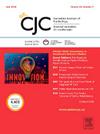心血管临床试验中的贝叶斯分析方法:为什么、何时、如何?
IF 5.8
2区 医学
Q1 CARDIAC & CARDIOVASCULAR SYSTEMS
引用次数: 0
摘要
贝叶斯分析框架具有临床直观性,其特点是将以往的证据纳入分析,并允许估计治疗效果及其相关的不确定性。贝叶斯统计推断在心血管领域的应用并不新鲜,最近应用贝叶斯分析的各种随机试验就说明了这一点。鉴于试验具有制定指南的特点,透彻了解贝叶斯统计方法的概念和技术细节对现代心血管执业医师至关重要。因此,本综述旨在为心血管临床试验的解释和贝叶斯(再)分析提供循序渐进的指导,同时强调贝叶斯推断对临床读者的主要优势。在介绍了频数统计推断和贝叶斯统计推断的概念以及应用贝叶斯方法的原因后,介绍了进行贝叶斯分析的关键步骤,包括:验证研究问题的临床适宜性、试验设计的质量和完整性,以及充分激发先验(即在当前证据可用之前对某种治疗方法的信念)、确定可能性,并将它们组合成后验分布。对这种后验分布的研究不仅可以确定治疗优越性的概率,还可以确定超过任何选定的最小临床重要差异的概率。多重先验应该透明地预先指定,以限制事后操作。利用这一指南,我们对三项心血管随机对照试验进行了重新分析,展示了贝叶斯推断的清晰性和多功能性。本文章由计算机程序翻译,如有差异,请以英文原文为准。
Bayesian Analytical Methods in Cardiovascular Clinical Trials: Why, When, and How
The Bayesian analytical framework is clinically intuitive, characterised by the incorporation of previous evidence into the analysis and allowing an estimation of treatment effects and their associated uncertainties. The application of Bayesian statistical inference is not new to the cardiovascular field, as illustrated by various recent randomised trials that have applied a primary Bayesian analysis. Given the guideline-shaping character of trials, a thorough understanding of the concepts and technical details of Bayesian statistical methodology is of utmost importance to the modern practicing cardiovascular physician. This review presents a step-by-step guide to interpreting and performing a Bayesian (re)analysis of cardiovascular clinical trials, while highlighting the main advantages of Bayesian inference for the clinical reader. After an introduction of the concepts of frequentist and Bayesian statistical inference and reasons to apply Bayesian methods, key steps in performing a Bayesian analysis are presented, including verification of the clinical appropriateness of the research question, quality and completeness of the trial design, and adequate elicitation of the prior (ie, one’s belief toward a certain treatment before the current evidence becomes available); identification of the likelihood; and their combination into a posterior distribution. Examination of this posterior distribution offers not only the possibility of determining the probability of treatment superiority, but also the probability of exceeding any chosen minimal clinically important difference. Multiple priors should be transparently prespecified, limiting post hoc manipulations. Using this guide, 3 cardiovascular randomised controlled trials are reanalysed, demonstrating the clarity and versatility of Bayesian inference.
求助全文
通过发布文献求助,成功后即可免费获取论文全文。
去求助
来源期刊

Canadian Journal of Cardiology
医学-心血管系统
CiteScore
9.20
自引率
8.10%
发文量
546
审稿时长
32 days
期刊介绍:
The Canadian Journal of Cardiology (CJC) is the official journal of the Canadian Cardiovascular Society (CCS). The CJC is a vehicle for the international dissemination of new knowledge in cardiology and cardiovascular science, particularly serving as the major venue for Canadian cardiovascular medicine.
 求助内容:
求助内容: 应助结果提醒方式:
应助结果提醒方式:


